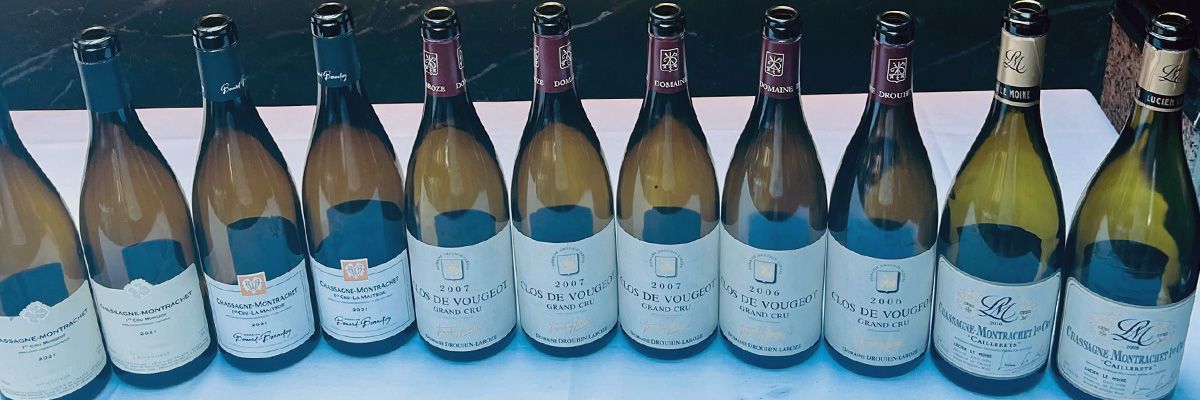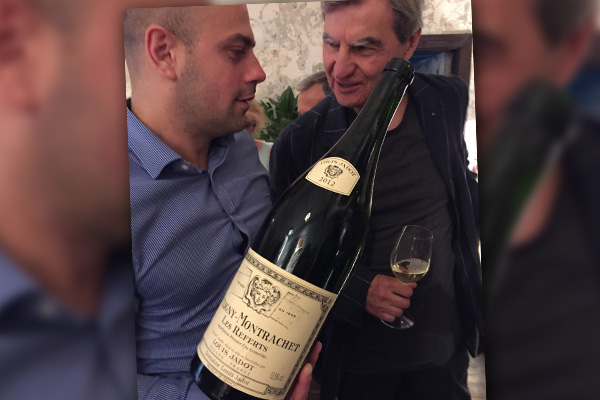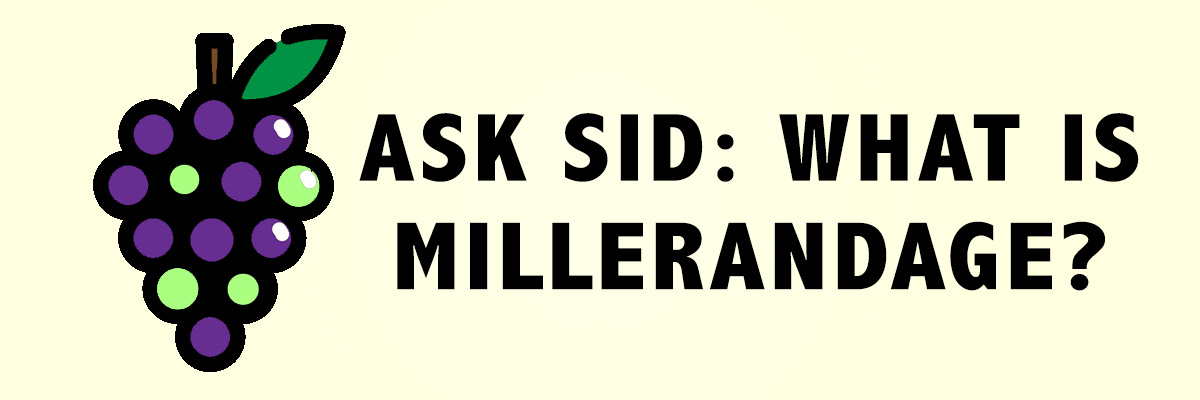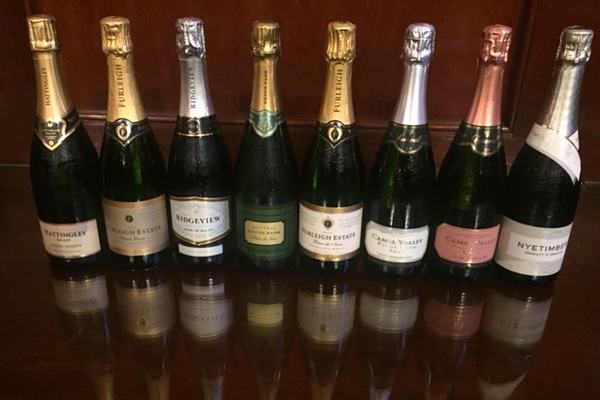 |
 |

Question: 2025 grape harvest is underway. Which wine region is having the most difficulty?
You might also like:
 |
 |
 |
 |
 |

Question: 2025 grape harvest is underway. Which wine region is having the most difficulty?
You might also like:
 |
 |
 |

The modified Paulée of the Confrérie des Chevaliers du Tastevin Sous-Commanderie de Vancouver British Columbia is a remarkable event. It is approaching 20 years, started first in an informal way but now celebrating the 16th formal anniversary since 2010 spotlighting white wines from a specific region of Burgundy. Lots of postings on this Blog referencing Puligny, Meursault – especially Perrieres, Corton- Charlemagne and Grand Cru Chablis. Only twice before have we featured Chassagne in 2012, and in 2018 (2015 vintage back to 2002) linked here August 27, 2018 so this was a good time for an update on August 24, 2025 at Acquafarina. Chassagne-Montrachet is a large area with many smaller wine producers. Covers 370 hectares (865 acres) around a stretched out 2 1/2 miles with 159 ha Premier Cru mainly on the slopes now up to 75% white, 180 ha Village AC usually on flatter ground and 11.4 ha Grand Cru (just under half of both Montrachet & Batard-Montrachet and all of Criots-Batard-Montrachet but none of both Chevalier-Montrachet & Bienvenues-Bâtard-Montrachet). A more difficult white Burgundy region to get to know well with such diverse vineyards plus the inter family connections of the Colins, Morey, Coffinet, Pillot, Gagnard, and others. The popularity and increased price of white over red wine has resulted in too much conversion. There should be a new classification done for the Premier Cru designation so not necessarily both white & red for the same lieu-dit is allowed. Areas like the catch-all label of Morgeot, Clos Saint-Jean and Les Macherelles should not be classified 1er Cru white when grown on flatter land more appropriate red wine soil. Fun trying some 30+ wines over 14 vintages but not enough time given to study them. Wines were arriving at different times over a range of temperatures and changing with airing in the glass. Your scribe commented on the Paulee wines and suggested rather than 2 events in one we consider making the Paulee its own event – more like the Meursault Monday appreciation at Les Trois Glorieuses every November.
Easier comparing the Paulee wines this year because Grand Senechal Christine Collison smartly organized them into three more manageable groups and Chevalier Matthew Burke brilliantly handled his position of Wine Steward. Well done. Some brief comments:
(A) VINTAGES 2023, 2022, 2021, 2020:
2023 LES CHENEVOTTES MARC MOREY: Richer supple larger vineyard on the north side (nearer St. Aubin) from this respected producer using battonage and later bottling. Young generous vintage seems unusually yeasty. 13.5 abv
2022 LA ROMANEE MOREY-COFFINET: Large crop from an appealing year but old vines on high slopes result in excellent intense racy minerals. Tied for best showing in this younger group from the largest vineyard holder of this coveted Premier Cru. 13 abv
2021 MALTROIRE ARMAND HEITZ: Bad April frosts low yields with more floral notes and less weighty using Diam closure. 13 abv
2021 LA BOUDRIOTTE/MORGEOT LAMY-PILLOT: Chevalier brought this bottle which was the red version.
2020 LES CHENEVOTTES MARC MOREY: Two different bottles of this one both 3 years older than 2023. Different temperatures but one fresher and fuller. 13.5 abv
2020 EN VIRONDOT MARC MOREY: Great vineyard only 2.28 ha high on the steep slopes part of La Grande Montagne with impressive dense impressive minerality. My fav in this first group.
2020 MORGEOT JEAN-CLAUDE RAMONET: The old Domaine Ramonet Estate is now split between Jean-Claude & Noel and their children. This is rather a good Morgeot blanc at fair value. Some of their Cuvees are now being “leased” to other top producers. 13.5 abv
2020 CLOS DE LA CHAPELLE DUC DE MAGENTA/LOUIS JADOT: Solid from this balanced underrated vintage. Will develop further.
2020 VILLAGE PHILIPPE COLIN: Interesting to try this Village Chassagne against all the other Premier Crus. Surprising apple-pear subtlety and elegance from this top producer. Sources from lots of different parcels, many from the Puligny side and some from his family’s Domaine Colin-Deleger. Better white wine soils than some of the Premier Cru wines.
(B) VINTAGES 2019, 2015, 2014, 2013, 2012, 2010:
2019 CHAMP GAIN REMOISSENET: Hot year but 15 abv on the label seems crazy. Mid slope vineyard with exotic flavours but finishes with too much alcohol.
2015 MORGEOT BACHELET-RAMONET: Fleshy year but this one shows lighter simpler with less weight than most 2015. Lovely 13.5 abv
2015 LES FAIRENDES/MORGEOT PIERRE-YVES COLIN-MOREY: Best Morgeot above the D113A using its own name by a great producer PYCM earlier picking (like Bouchard Pere) using less SO2 in newer colder winery for more recent vintages. Lees but no battonage stirring for vibrant refreshing acidity style. First bottle emptied.
2015 LES CHAUMÉES JEAN NOEL GAGNARD: Largest holder in Les Caillerets and 2nd here. Old style full and softer 13.5 abv
2015 LES CHAUMÉES PHILIPPE COLIN: Largest vineyard holder in this Premier Cru higher up on the north side. Ripe solid delicious. Much richer and more complex than the good value Philippe Colin Village Chassage 2020.
2014 LES CHENEVOTTES MARC MOREY: Excellent tension and balanced acidity here. Still young and vibrant so continue to age this treasure.
2014 CLOS DU CHÂTEAU DE LA MALTROYE: Outstanding vintage but disappointing maderized bottle. Marl soils are more dependable for red.
2013 LES VERGERS MARC MOREY: Just below Chaumees at mid-slope from this usually dependable value vineyard. Lovely.
2013 EN VIRONDOT MARC MOREY: Same vineyard and producer as the 2020 in the previous flight. Variable vintage but still fresh complex with a softer finish. Shows very well,
2013 LES MACHERELLES REMOISSENET: Below Chenevottes on the north side on flatter ground better for red wines. Coarser but drinking OK.
2012 LES CHAMP GAIN PIERRE-YVES COLIN-MOREY: Tried two bottles but unfortunately both corked TCA.
2010 LA GRANDE MONTAGNE LUCIEN LE MOINE: Older great smaller yield vintage south of En Virondot. Rich and powerful with such impressive depth of mature pure flavours.
(C) CHASSAGNE-MONTRACHET 1ER CRU LES CAILLERETS VINEYARD:
Arguably the best or one of the very best vineyards for Chassagne white wine. Combines fullness, raciness, and depth for a textbook Chassagne Premier Cru. All these Les Caillerets wines showed style and complexity. 10.68 ha with En Caillerets at 5.11 all white, A very good showing.
2018 FONTAINE GAGNARD: Starting a new winery with more space and flexibility but this had the least amount of time in oak (11 months 1/3 rd new). Notice the oak from this hotter year in a softer reductive style. Rather good terroir from .56ha at 13.5 abv.
2018 CAROLINE MOREY: Talented white wine maker married to Pierre using lees not stirred with 20% new oak. Full intense concentrated pure fruit impresses. So fresh from .36ha at 13.5 abv.
2017 JOSEPH COLIN: Fresh from that subtle 2017 acidity is both stylish and elegant. Lighter but lovely from .39ha at 13 abv.
2016 PAUL PILLOT: Difficult variable frosty vintage using larger 300-500 litre oak casks (18 months) not much new in a softer classic simpler Chassagne from .51ha at 13 abv.
2014 FAIVELEY: Warmer temperature makes it seem softer but still young and great vintage longevity. 13.5 abv
2014 CAROLINE MOREY: Sensational. Using to best advantage the upper marl section for weight together with the lower calcareous part for elegance! Young and so balanced with unlimited potential. Your scribe’s Wine of the Night. 13.5 abv
2013 PIERRE-YVES COLIN-MOREY Magnum: Wonderful format in magnum. Close second here only because 2014 is a better vintage. PYCM says “Les Caillerets can show timidly in its youth but ages well, often developing more finesse than the Grand Crus but with less weight”. Only .18ha at 13 abv is put to perfect use.
2010 LUCIEN LE MOINE: At lunch with an exquisite porcini course showed the vintage complexity. Delightful drinking on the mature exciting plateau or just the start of the downslope with complex bouquet and layers of flavour. Yes please.
2008 LUCIEN LE MOINE: Bottle variation here. Some are maderized and others quite mature. LLM doesn’t own any vineyards here so best selection in a variable older vintage not guaranteed for long aging.
Young 2021 Chassagne reds but aged Drouhin-Laroze Clos Vougeot showed 2006 best open aromatics and enjoyable rounder softer drinking while 2007 more structured and backward needing more cellaring.
The outstanding lunch by Acquafarina was beautifully prepared and served. Well matched to the Burgundy wines. Appreciated the appropriate size of the servings so artistically presented using the finest of ingredients. This was the third year in a row by them for this memorable event and we look forward to many more. Congrats.
You might also like:
 |
 |
 |
 |
 |

Question: Sid would you please briefly explain the term “millerandage”.
You might also like:
 |
 |
 |

Climate change has been with us for a while. Lots of discussions and some foreboding concerns in the early days back to the politics of Jimmy Carter in the seventies and Al Gore & Margaret Thatcher in the late eighties. Alarm bells have been sounded by many since then but remedial solutions are much slower. Therefore it is encouraging to see the wine industry stepping forward with admirable action. Many winemakers and winery owners are ahead of the pack in making changes in their vineyards and cellars. Also several industry leaders like my long time friend Michelle Bouffard are passionate about the impact of climate change in the wine world and are getting the word out with events like Tasting Climate Change. Well done.
This week your scribe noticed active changes with two important happenings:
Firstly CHÂTEAU LAFLEUR a respected Pomerol with exceptional terroir back to 1872 just announced on August 24, 2025 from the Guinaudeau family ownership team (since 1985) that they have “decided to cease adhering to the stricter appellations of Pomerol and Bordeaux beginning with the 2025 vintage” for all 6 of their wines which will now be designated as “Vin de France”. The reason given is “Climate is changing fast and hard, that much is clear. The vintages 2015, 2019, and above all 2022, were strong evidence of that. 2025 goes a step further. We must think, readapt, act. Our decision-making and the resulting practices are in fact evolving much faster than what is authorized in our Appellations of Origine system.” They believe “This is a strong decision that will allow us to face the reality of climate change with precision and efficiency.” Speculation is that they think it is better to irrigate the vines which are not presently legally allowed but we will see what develops. What other properties might follow suit? Intriguing for sure.
Secondly your scribe attended on August 25, 2025 in Vancouver an interesting seminar VITICULTURAL BRIDGES organized by Hopscotch & Comite Interprofessionnel des Vins D’Alsace presenting WINES OF ALSACE & WINES OF BRITISH COLUMBIA for a cross-regional exchange between two remarkable wine regions. Impressively hosted by personable Van Doren Chan (Canadian Association of Professional Sommeliers British Columbia Director) with several winemakers in person (led by knowledgeable Olivier Humbrecht MW of Zind Humbrecht in Alsace & Consultant for Phantom Creek in BC) and on insightful videos. Thought provoking discussions with two panels featuring Alsace and British Columbia Challenging Climate & The Art of Premium Sustainable White Wines with 16 wines and more at a walk around tasting afterwards.
Overall main focus was on the key common grapes from both regions of PINOT GRIS, RIESLING, & PINOT NOIR.
My favs were 2023 DOMAINE ZIND HUMBRECHT RIESLING GRAND CRU RANGEN with full rich pure variety expression needing only more time to further evolve for complexity plus BC Pinot Noirs showing outstandingly and were preferred by me over the improving Alsace ones.
The winner was the amazing complex 2022 MARTIN’S LANE HIEROGLYPH PINOT NOIR single block of 17 year old Pommard clone vines, 80% whole clusters aged in French & Austrian Stockinger oak. GM & Winemaker the brilliant Shawn Munn on the panel explained how they are adapting so well to these climate changes. 2022 UNSWORTH COWICHAN VALLEY PINOT NOIR is lighter but elegant and so charming. Panelist Chris Turyk Director of Marketing & Sales told me the growing concerns about increasing potassium in the vineyards leading to higher pH and lower acidity in the grapes. This is the same problem I noticed in my last Chablis visit with the 2023 & 2024 vintages losing some of that freshness and tension in the resulting wines because of higher potassium levels. No doubt the styles of many wines around the world are evolving because of climate change and it requires winemakers to be alert and to make the necessary prudent changes in the vineyard and in the cellars.
Thought-provoking stuff. Hats off for this important spotlight issue! So important.
You might also like:
 |
 |
 |
 |
 |

Question: Wine grapes seem to be ripening earlier every year so has 2025 started in the northern hemisphere?
You might also like:
 |
 |
 |